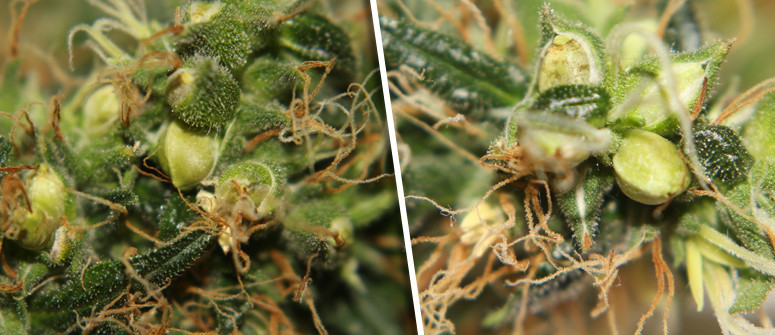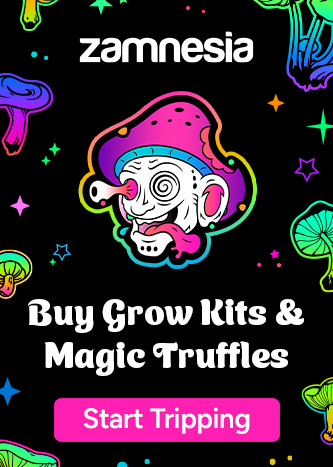Do feminized seeds have a bigger chance of turning into hermaphrodite plants?

When feminized seeds hit the market at the end of the nineties some growers ended up with hermies. But is this still the case? Let's find out.
Most small scale cultivators desire an exclusively female crop, producing seedless buds, that can be smoked, extracted and vaporized for their consumption. For this reason feminized cannabis seeds have become the standard for many home growers across the globe.
In the beginning when feminized seeds hit the market the end of the nineties, feminized seeds acquired from some breeders would run gamut from purely female plants to intersex or hermaphrodite plants known also as “hermies”. Since growers invest so much personal time into developing and maintaining a crop, some individuals became paranoid, that their alleged feminized seeds might result in hermaphrodites. So, the question remains, do feminized seeds turn into hermies?
WHAT CAUSES HERMIES?
There are a number of factors, that influence androgyny in cannabis. Firstly, strains with weak genetics are more susceptible to contain “hermie” seeds and therefore continue to spread their genetic lineage. Also, extreme conditions of weather, resources and location change can cause female cannabis plants to grow pollinators in reaction to stressors.
In a similar vein, plants containing unharvested flowers far past due will spur what is known as rodelization. This phenomenon occurs when female plants essentially put all their final energy into producing pollen to fertilize and grow seeds before they die.
Chemical additives are another often used method of “forcing” female plants to produce their own pollen. By spraying female plants with solutions, such as colloidal silver, they will begin to pollinate, culminating in the production of seeds.
HOW TO BREED FEMINIZED CANNABIS SEEDS
The fear of unknowingly growing intersex cannabis stems from the process of breeding feminized seeds. In order for the procedure to work, breeders force one female parent plant to produce pollen sacs used to fertilize the other female. The result: Completely feminized cannabis seeds, that produce higher yields of usable bud.
In reality, the frequency of feminized seeds becoming “hermies” is very low, since professional breeders use chemical stimulation to encourage plants with strong genetics to adopt intersex characteristics. This is all performed to successfully carry out fertilization between the two females.
BAD BREEDERS
While it’s unlikely you will have to worry about growing intersex plants from a group of feminized seeds today, the past tells a slightly different story. Decades ago, the illicit cannabis industry was even less standardized worldwide than it is now, resulting in inconsistent breeding practices.
Even at present, unreliable and unknowledgeable breeders who don’t perform quality assurance tests may sell “feminized seeds”, that end up being self-pollinators. It’s not advised to purchase seeds from breeders without proven credibility of selling strong genetics.
SIGNS OF “HERMIES”

In the case, that you’ve already purchased a bag and are unsure if it contains “hermies,” here are physical signs of to look for.
Small pollen sacs, that cause the flowers to produce seeds, rendering them unusable for consumption. They can also be recognized by the piles of pollen they spill on the flowers and leaves below them. Stamens or “bananas” are another sign you may be growing a “hermie” through self-pollination.
Signs, that a plant is hermaphrodite, can be hard to recognize when you’re not looking for them. The female plant continues to grow buds, while pollinators are simultaneously working to produce seeds. It takes a concerted effort to assure your entire female crop will produce sinsemilla.
Pollen sacs are easier to see with the naked eye, but the stamen “bananas” are smaller and thinner. They also appear to have a lime green color at times, camouflaging them into the rest of the plant. While pollen sacs and stamens can both be physically removed, it’s likely they’ve already been pollinating for some time, making it too late to save your yield for that particular plant.
HOW TO AVOID GROWING HERMIES
The best protocol to follow to avoid growing “hermies” is to purchase seeds from a breeder you trust. Since feminized seeds are omnipresent across reputable online seed banks, you shouldn’t run into many issues with your plants’ sex.
If you do find, that your female plants have grown pollinators, immediately inspect the others for early signs of pollination. Finding, that you’ve grown intersex plants can be frustrating from the perspective of producing a full yield, but remember: “Hermies” are essential in creating feminized seeds in the first place! Plus, in the future, you will be all the more aware of what and when to look at for signs of hermies.




